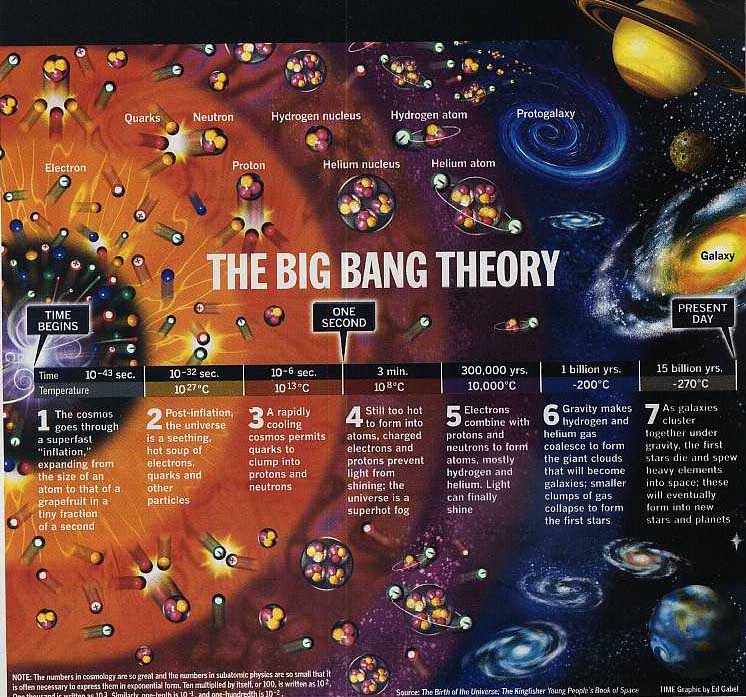3 Minutes after the Big Bang

(http://www.crystalinks.com/bigbang2.jpg)
The Big Bang occurred 13.7 billion years ago. Since then, the universe has passed through many different phases. Due to the extreme conditions and the violence of its very early stages, it arguably saw more activity and change during the first few minutes than in all the billions of years since. The first three minutes is split up into eras. Planck Era:
This era occurred at about < 10^-43 seconds. It can be described as the era of unknown in astrophysics. No one really knows what happened. Our current physics is not enough and breaks down because within the period of time we think all 4 forces were unified, we are trying to unify gravity with quantum mechanics. Until we have a valid theory of quantum gravity we will not know what happened during this time period.

(https://web.njit.edu/)
GUT era:This era occurred at about 10^-43–10^-38 seconds. GUT stands for grand unified theory. At the start of this era, gravity froze out and became the unique force. We don’t really have evidence that strong force should be merged with electroweak force. This era is still somewhat speculative. It is not until the end of the GUT era that we have confidence in what we actually know about how the universe formed. The GUT Era ended when the strong force separated from the others, resulting in release of a huge amount of energy that caused the universe to expand very quickly (faster than the speed of light). This interval of time is called inflation, which can make structure by stretching tiny quantum ripples to enormous sizes

(https://web.njit.edu/)
The electroweak era occurred at 10^-38–10^-10 seconds. This is the first era that we have a solid grasp with physics. During this era, the temperature of the universe cooled enough to separate the Strong Force from the Electroweak Force. Energy has the ability to be transformed into mass, and vice versa. Spontaneous production of matter and antimatter.

(https://web.njit.edu/)
The Particle Era occurred at 10^-10– 0.001 seconds. When the four fundamental forces were finally distinct, ordinary particles could start to form. However, both matter and anti-matter were formed in almost equal numbers, created out of the energetic photons present at that time. Once both types of matter were formed, a particle would not go very far before it met up with its anti-particle and annihilated to become pure energy again.

(https://web.njit.edu/)
When the universe was only 1 millisecond old, nuclei were hot enough and dense enough to fuse to create heavier elements, but it was so dense that the nuclei broke apart again as soon as they formed. This fusion and breakup continued until about 3 minutes after the Big Bang, when the universe cooled enough (10^9K) that fusion ended. At this point, 75% of baryonic matter was in the form of hydrogen, 25% in the form of helium, and trace amounts were in the form of other atoms, mostly lithium. One of the great successes of the Big Bang theory is that it predicts just the right amount of these different forms of matter. At the end of the Era of Nucleosynthesis, the universe contained the "primordial" mix of hydrogen, helium, and lithium that went into making the first stars. All heavier elements have been created by fusion inside of stars and during supernova explosions.

(https://web.njit.edu/)

No comments:
Post a Comment